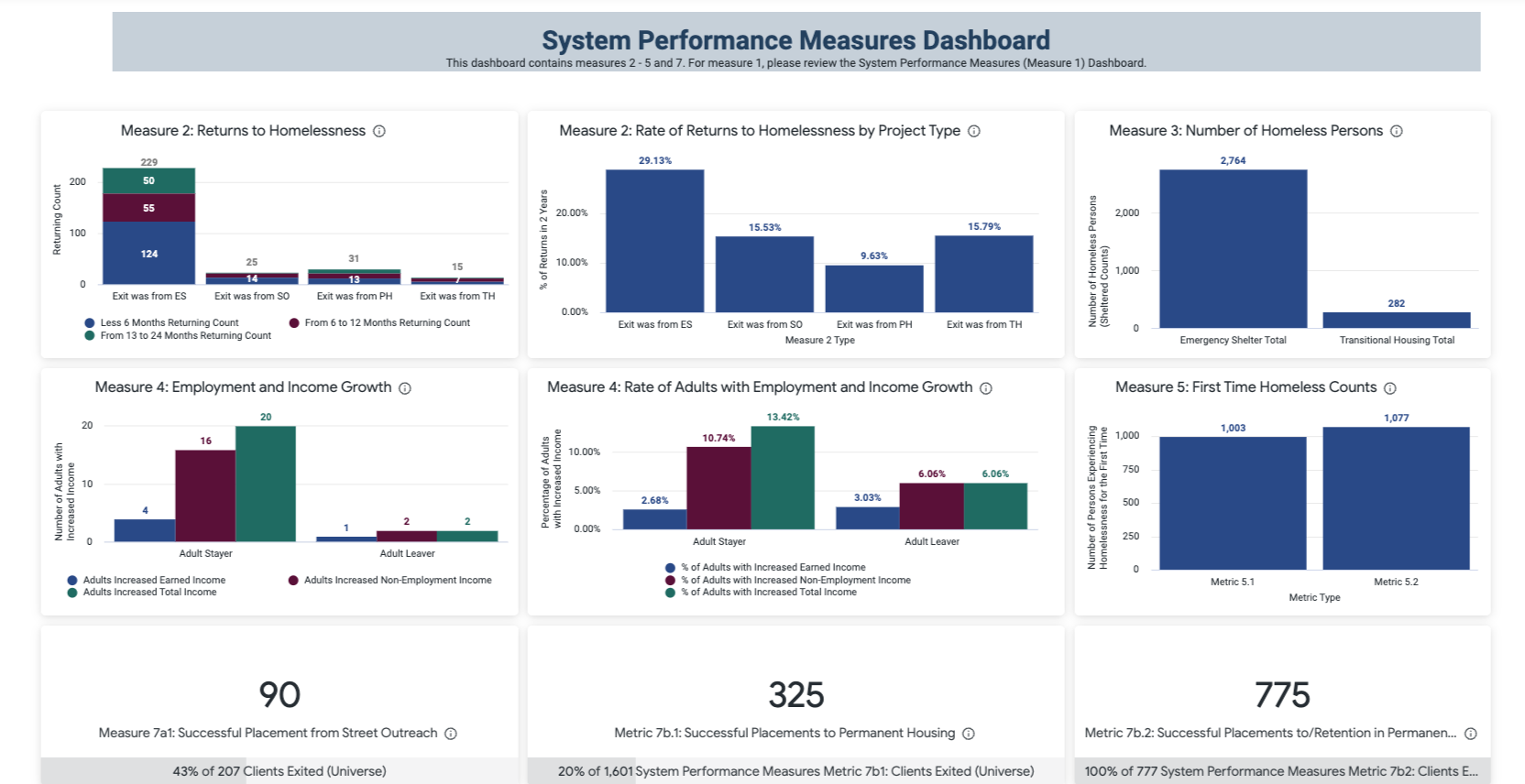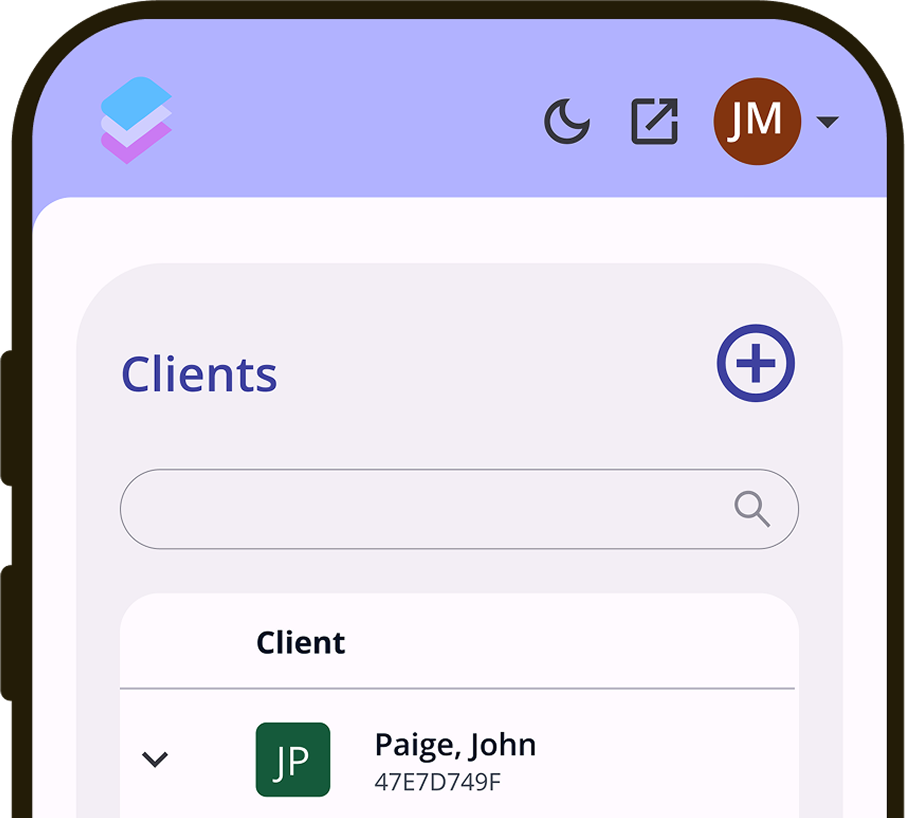Understanding the Role of Data Analytics in Homelessness Policy Evaluation

Policymakers are constantly seeking effective strategies to address the complexities of homelessness.
Thankfully, harnessing the power of data analytics has emerged to help. Analytics tools can simplify large datasets that address the multifaceted nature of homeless populations, homeless services, and homeless intervention outcomes.
When policymakers use relevant metrics and industry-specific data analytics tools, they gain a deeper understanding of people experiencing homelessness, develop more effective policies, and ultimately improve the lives of the unhoused members of their community.
Thank you for joining our team at Bitfocus! Let’s get started.
Choosing Metrics that Matter in Homelessness Policy
The effectiveness of a data-driven homelessness policy evaluation depends greatly on the metrics policymakers analyze.
To examine the full picture of a policy and its outcomes, metrics should go beyond demographics to include well-being outcomes and should factor in local socioeconomic factors.
Diversion Metrics
In evaluating diversion policies, the metrics should reflect the various pathways leading individuals to and away from homelessness. Here are some key housing metrics that play a pivotal role in this evaluation:
- Duration of Homelessness: Assessing how long clients are unhoused provides valuable insights into the efficiency of intervention strategies.
- Percentage of Clients Entering Interim Housing: Tracking the percentage of clients accessing interim housing gauges the effectiveness of transitional support.
- Percentage of Clients Moving from Interim Housing to Permanent Housing Placements: Keeping track of individuals who move from temporary accommodations to stable, long-term housing highlights the tangible outcomes of transitional support initiatives.
- Percentage of Clients Returning to Homelessness: Monitoring the recurrence of homelessness among clients offers a critical assessment of long-term stability.
Meaningful Metrics Beyond Demographics
Inclusive metrics that address the complexities of a community’s demographics are essential. Metrics should be captured across:
- Racial and ethnic groups
- Tribal affiliations
- Sexual orientation
- Gender identity
- Disabilities (including physical health, mental health, and substance use conditions).
To get a more nuanced understanding of the well-being outcomes of unhoused individuals, it's essential to include the following metrics:
- Employment Status and Income: Increased employment hours and earnings are a great reflection of economic stability achieved through intervention programs.
- Health Outcomes: Improvements in physical and mental health reflect the broader impact on the well-being of clients.
This information helps to assess the equitable distribution of services among diverse groups.
Integrating the following local data points provides an even greater understanding of the effectiveness of a particular policy:
- Housing market dynamics
- Criminal justice involvements
- Healthcare system accessibility
These metrics are especially useful when assessing the advancement of social welfare that often follows successful homeless interventions.

These housing, well-being, demographic, and socioeconomic metrics measure success and pinpoint areas for policy improvement and accountability.
Enriching Policy Evaluation with Advanced Data Analytics
With advanced data analytics tools, policymakers can quickly sift through complex datasets to uncover hidden trends, patterns, and correlations in homelessness interventions. These tools support evaluators in determining which services have had the most significant impact and why.
Clarity Human Services, Bitfocus’ intuitive and user-friendly HMIS, is a leading solution that makes large datasets actionable.
Through advanced data visualization, Clarity allows data analysts to see patterns and understand the stories beneath those patterns.

These visualizations transform complex findings into intuitive graphics and actionable takeaways to share with colleagues and key stakeholders.
The value of data analytics in any tool depends heavily on the quality of the gathered information. Accurate, timely, and relevant data is essential for gaining meaningful insights and making appropriate policy decisions.
Clarity's prebuilt Data Quality Dashboard provides a solid foundation for accurate, advanced data analytics.

The Clarity Data Quality Dashboard helps organizations maintain high data integrity.
Integrating Clarity HMIS for Comprehensive Policy Analysis
An HMIS like Clarity takes a multilayered approach to integrating data for comprehensive policy analysis. The integration of Clarity in policy evaluation provides several advantages:
- Centralization of data. By consolidating information from multiple sources into one platform, policymakers can more easily assess the state of homelessness in their area and the ongoing efforts to address it.
- Real-time insights. Clarity’s real-time data processing allows for instant evaluation of policy outcomes and continuous adjustments as needed to maximize efficacy.
- Longitudinal tracking. The ability to follow individual cases over time unlocks invaluable data on the long-term effectiveness of a community’s interventions, shining light on the patterns that contribute to repeated challenges (and sustained successes!).
With Clarity's pre-built reports, policymakers can quickly access insights and begin incorporating those insights into their work right away. The tool’s customizable reports offer opportunities for in-depth evaluation across various levels, from multiple Continuum of Care groups to specific agencies or programs.
Key Clarity Integrations for Effective Homelessness Policy Evaluation
Clarity's integration with third-party tools like Tableau® and Crystal Reports® offers analytics and reporting solutions further tailored to policymakers' needs.
Policymakers seeking to leverage geospatial analytics can combine location information with other data points to create easy-to-understand visualizations. The platform includes native integration with ArcGIS Online®, allowing for geospatial understanding of homelessness data that can help policymakers track geographic inequities.

Clarity’s features transform vast datasets into actionable takeaways for more impactful homelessness services.
Effective Strategies for Data-Driven Policy Evaluation
The following best practices allow policymakers to make informed, data-driven evaluations, leading to more effective policies and improved outcomes for people experiencing homelessness.
- A focus on prevention and long-term solutions. By analyzing data to identify factors contributing to homelessness, evaluators can create policies to prevent homelessness and support long-term housing stability.
- Stakeholder engagement. Encouraging continuous feedback from all stakeholders, including service providers and the homeless population, ensures that data-driven insights are grounded in real-world applications and human experience.
How Data Analytics Tools Provide a Strategic Edge
Data analytics tools give policymakers a powerful edge in policy evaluation, enabling them to gather, analyze, and visualize data in previously impossible ways.
Clarity offers a functionality that allows communities to integrate their coordinated entry workflow, referral process, and housing outcomes into the HMIS.
Recently, this integrated structure benefitted a large urban community, which discovered that most of their denied referrals for coordinated entry needed to be re-examined. Providers denied referrals for reasons outside of funder-driven eligibility and marked them as “invalid.”
Using a combination of Clarity's pre-made referral statistics reports and custom reports, the community pulled together funders, coordinated entry staff, and housing providers to re-evaluate eligibility criteria to reduce housing barriers. These efforts eliminated perceived eligibility criteria for several programs and reduced the number of vacant units, giving more folks in the community a safe place to stay.
A data-driven approach rooted in these best practices ensures that policy evaluation is not just an exercise in data collection but a dynamic process toward sustainable homelessness solutions.
Anticipating Future Trends in Homelessness Policy Analysis
Using a data analytics tool that stays on top of emerging trends is vital to effective policymaking.
A tool that monitors the industry enables its decision-makers to adapt to changes, ensuring that strategies to combat homelessness are responsive, forward-thinking, and sustainable.
For example, there is increased consideration of equity and inclusion in homelessness policy evaluation.
In light of this trend, Clarity allows users to collect data on race and ethnicity, tribal affiliation, gender, sexual identity, and information about disabilities. This data collection gives policymakers insight into their community's inequities so they can customize services to meet specific community members' needs.

Clarity’s demographic data fields, including tribal affiliation, let policymakers better assess housing inequities in their community.

Client profile intake screen showing how to check client demographics.
As Point-In-Time counts continue to grow, so has interest in shelter and housing occupancy and vacancy rates.
Clarity meets this need straight on with INVENTORY. This module is a bed and unit management tool built into the Clarity HMIS. INVENTORY allows communities to see who lives in each unit or bed, what units or beds are available, and what units or beds are offline for cleaning and repairs.
With INVENTORY data, policymakers can make better data-informed decisions about the homeless response system.
Policymakers have witnessed the emerging focus on addressing unsheltered homelessness. Clarity Outreach supports local efforts to understand and address unsheltered homelessness in their jurisdiction.
As the homelessness landscape shifts, policymakers must remain agile, tapping into changes to foster a more informed and effective homelessness policy. A data analytics tool that also remains responsive is key in efforts to end homelessness.
Turn Data into Actionable Insights with Clarity HMIS
Integrating high-quality data and strategic analytics helps communities develop policies that address the immediate needs of their homeless population and work toward the long-term goal of ending homelessness altogether.
We built Clarity to empower your community in pursuit of that goal. If you’d like to learn more about Clarity’s advanced capabilities, we’d love to have a conversation!
